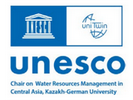



Year: 2025
Collections: Scientific Publications
Topics: Water, Climate
Authors: Rohullah Mayar, Mohammad Assem Mayar, Mohammad Hamid Omar
Countries: Afghanistan
Source: https://water-ca.org
Year: 2022
Collections: Scientific Publications
Topics: Energy
Authors: Rokita Dagmar, Sawatzki Rainer, Szyzdykova Raushan
Countries: Kazakhstan, Kyrgyzstan, Uzbekistan, Tajikistan, Turkmenistan
Source:
Year: 2020
Collections: Research Paper
Topics: Water
Authors: Krupa E., Barinova S., Romanova S., Aubakirova M., Ainabaeva N.
Countries: Kazakhstan
Year: 2018
Collections: Scientific Publications
Topics: Water
Authors: Thevs Niels, Aliev Kumar, Rouzi Ahemaitijiang, Abudushalike Nuerbayi
Countries: China
Year: 2024
Collections: Scientific Publications
Topics: Climate
Authors: Isaev E., Murata Akihiko, Shin Fukui, Roy C. Sidle
Countries: Kazakhstan, Kyrgyzstan, Uzbekistan, Tajikistan, Turkmenistan, Afghanistan
Source: https://water-ca.org/
Climate change poses various challenges for agriculture and water management practices in Central Asia (CA). Central to these challenges are cryosphere dynamics, fragile mountain ecosystems, and ongoing natural hazards that highlight the need for robust projections of regional climate change. For the first time, dynamic downscaling was conducted in Central Asia at a spatial resolution of 5 km.
Year: 2023
Collections: Scientific Publications
Topics: Climate
Authors: Sabyrbekov R., Overland I.
Countries: Kazakhstan, Kyrgyzstan, Uzbekistan, Tajikistan, Turkmenistan
Source: Central Asian Journal of Sustainability and Climate Research
Climate change poses a formidable threat to the Central Asian region, exacerbating preexisting vulnerabilities and necessitating enhanced adaptation efforts. The economic and environmental costs of these changing climatic conditions are substantial, compelling governments to bolster their adaptive capacity. In this study, we employ the United Nations Framework Convention on Climate Change (UNFCCC) adaptation framework and high-quality data to quantitatively measure the capacities of the Central Asian countries to adapt to the impacts of climate change.
Year: 2020
Collections: Research Paper
Topics: Water
Authors: Azami A., Sagin J., Sadat S. H., Hejran H.
Countries: Afghanistan
Year: 2018
Collections: Scientific Publications
Topics: Water
Authors: Sadeqinazhad Fahima, Atef Said Shakib, Amatya Devendra M.
Countries: Afghanistan
Year: 2025
Collections: Manuals
Topics: Water, IWRM
Authors: Kogutenko Larissa, Safiya Asalbekova, Michael Walther
Countries: Kazakhstan, Kyrgyzstan, Uzbekistan, Tajikistan, Turkmenistan
Source: Journal of MOLARE Research Centre (MRC)
Why water monitoring and assessment are important?
Water quality assessment is one of the crucial scientific and practical analyses to identify the possibility of water consumption for different human needs and nature/ecosystem conservation for future generations. Water quality can be measured and monitored in rivers, springs, creeks, swamps, estuaries, wetlands and lakes what is called aquatic systems. Quality parameters, such as biological, chemical and physical indicators identify the combination of values that influence the composition of water. Monitoring and comparison of different water habitats (macro invertebrates) in biological monitoring provides an information of water quality and allows to make a quick assessment.
Year: 2020
Collections: Research Paper
Topics: Water
Authors: Azami A., Sagin J., Sadat S. H., Hejran H.
Countries: Afghanistan
For questions about cooperation, please contact us at: